Contents
1. Introduction
1.1. Terms and Definitions
1.2. Reference Documents
1.3. Specification Contents
1.4. Objectives
1.5. Electrical Overview
1.6. Mechanical Overview
2. Auxiliary Signals
2.1. Reference Clock
2.1.1. Low Voltage Swing, Differential Clocks
2.1.2. Spread Spectrum Clocking (SSC)
2.1.3. REFCLK AC Specifications
2.1.4. REFCLK Phase Jitter Specification
2.2. PERST# Signal
2.2.1. Initial Power-Up (G3 to L0)
2.2.2. Power Management States (S0 to S3/S4 to S0)
2.2.3. Power Down
2.3. WAKE# Signal
2.4. SMBus (Optional)
2.4.1. Capacitive Load of High-power SMBus Lines
2.4.2. Minimum Current Sinking Requirements for SMBus Devices
2.4.3. SMBus “Back Powering” Considerations
2.4.4. Power-on Reset
2.5. JTAG Pins (Optional)
2.6. Auxiliary Signal Parametric Specifications
2.6.1. DC Specifications
2.6.2. AC Specifications
3. Hot Insertion and Removal
3.1. Scope
3.2. Presence Detect
4. Electrical Requirements
4.1. Power Supply Requirements
4.2. Power Consumption
4.3. Power Supply Sequencing
4.4. Power Supply Decoupling
4.5. Electrical Topologies and Link Definitions
4.5.1. Topologies
4.5.2. Link Definition
4.6. Electrical Budgets
4.6.1. AC Coupling Capacitors
4.6.2. Insertion Loss Values (Voltage Transfer Function)
4.6.3. Jitter Values
4.6.4. Crosstalk
4.6.5. Lane-to-Lane Skew
4.6.6. Equalization
4.6.7. Skew within the Differential Pair
4.7. Eye Diagrams at the Add-in Card Interface
4.7.1. Add-in Card Transmitter Path Compliance Eye-Diagram
4.7.2. Add-in Card Minimum Receiver Path Sensitivity Requirements
4.7.3. System Board Transmitter Path Compliance Eye Diagram
4.7.4. System Board Minimum Receiver Path Sensitivity Requirements
5. Connector Specification
5.1. Connector Pinout
5.2. Connector Interface Definitions
5.3. Signal Integrity Requirements and Test Procedures
5.4. Connector Environmental and Other Requirements
5.4.1. Environmental Requirements
5.4.2. Mechanical Requirements
5.4.3. Current Rating Requirement
5.4.4. Additional Considerations
6. Add-in Card Form Factors and Implementation
6.1. Add-in Card Form Factors
6.2. Connector and Add-in Card Locations
6.3. Card Interoperability
Acknowledgements
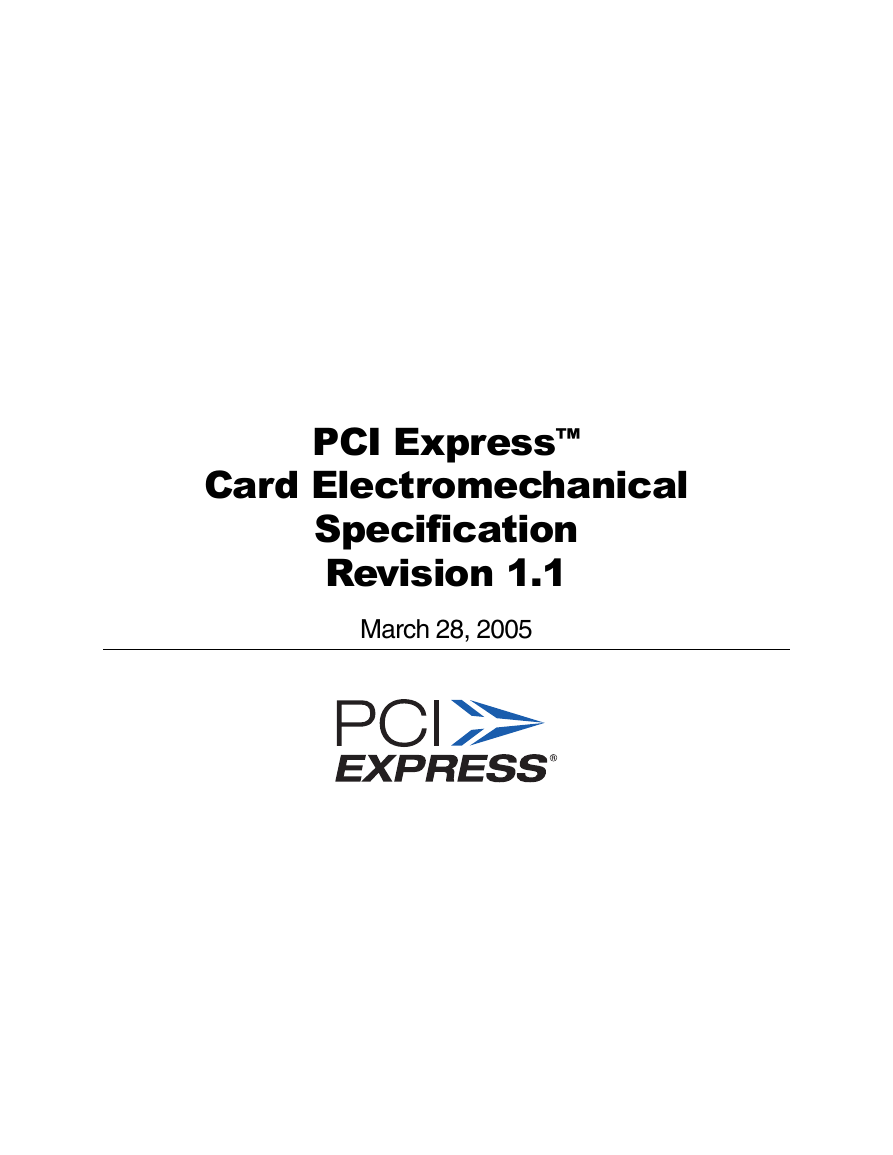
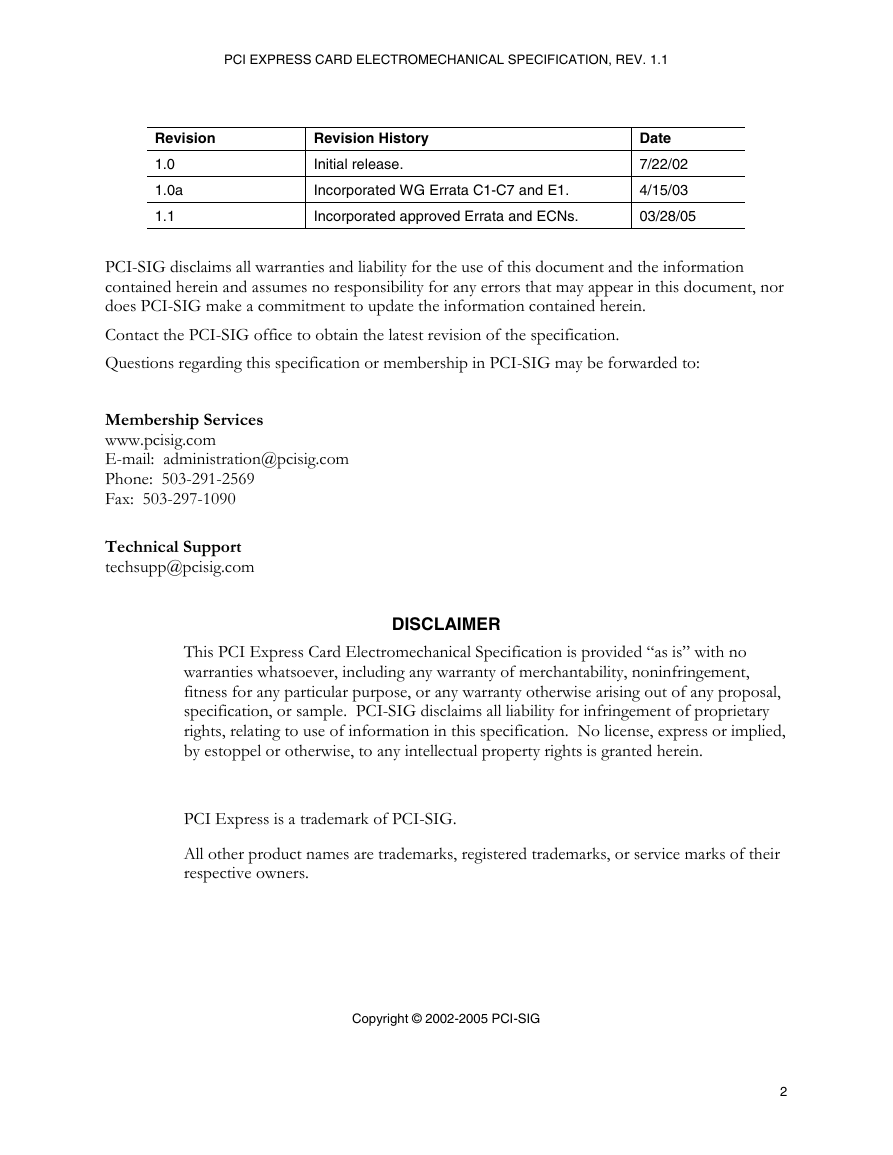
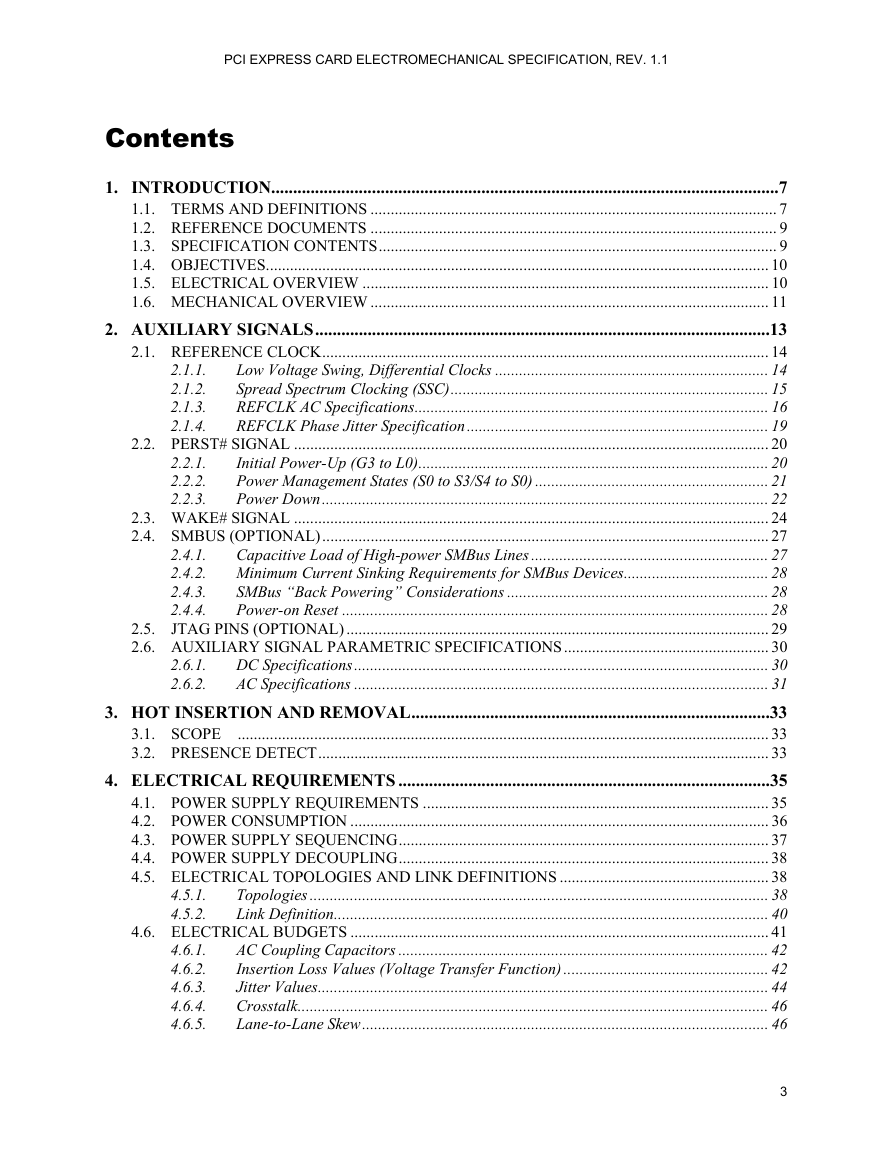
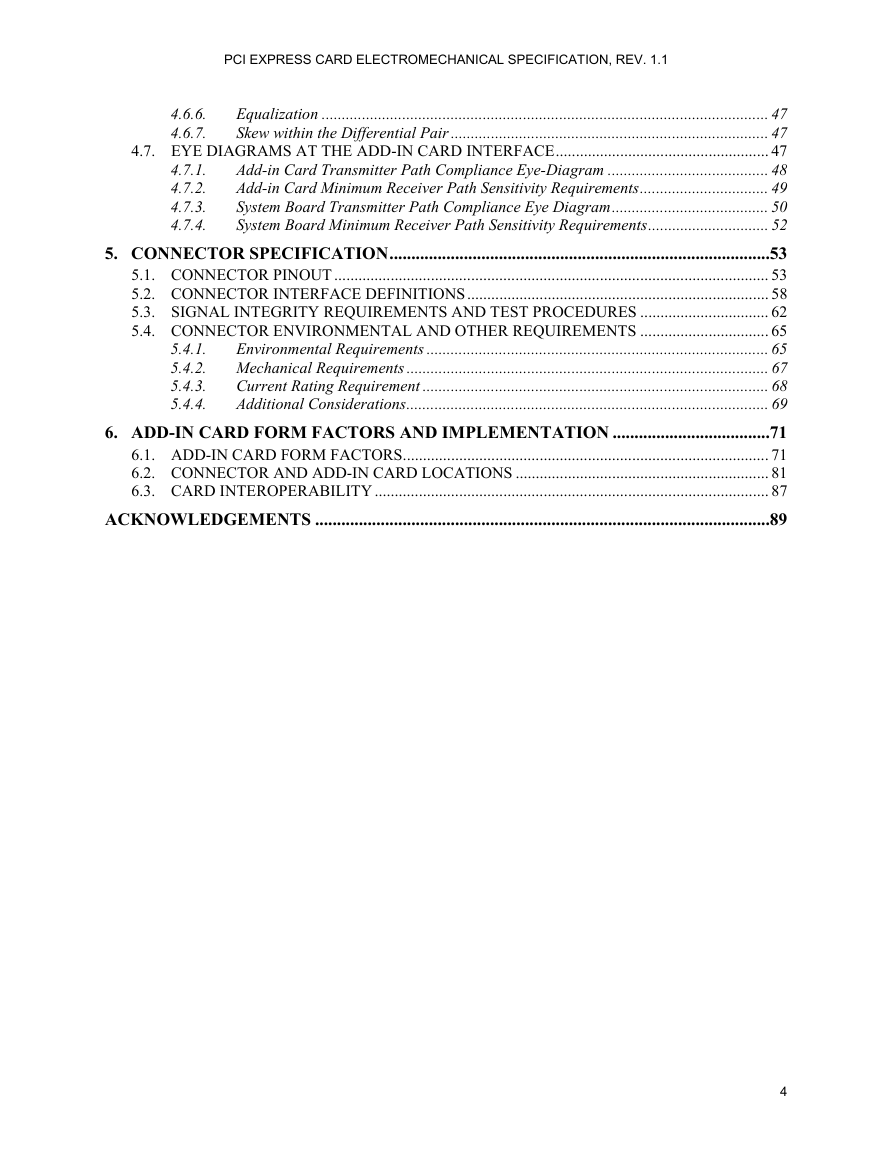
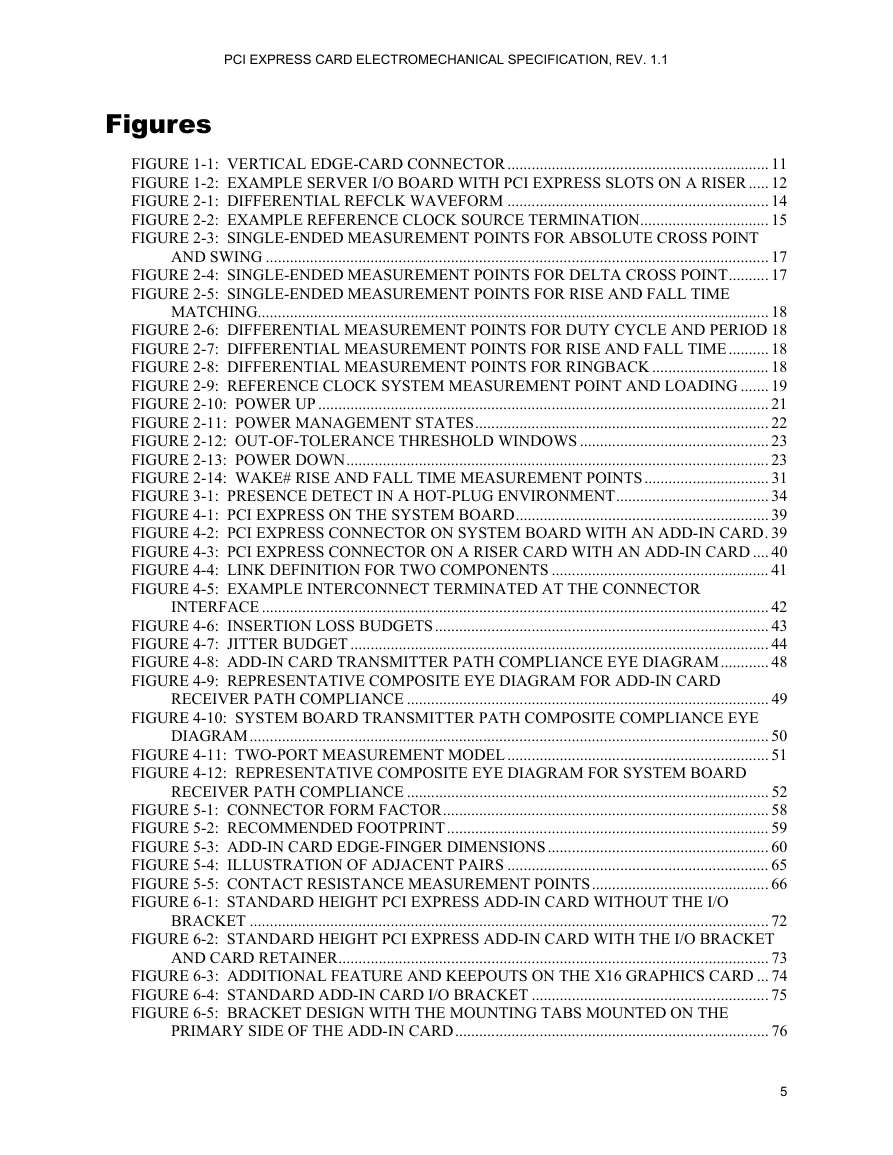
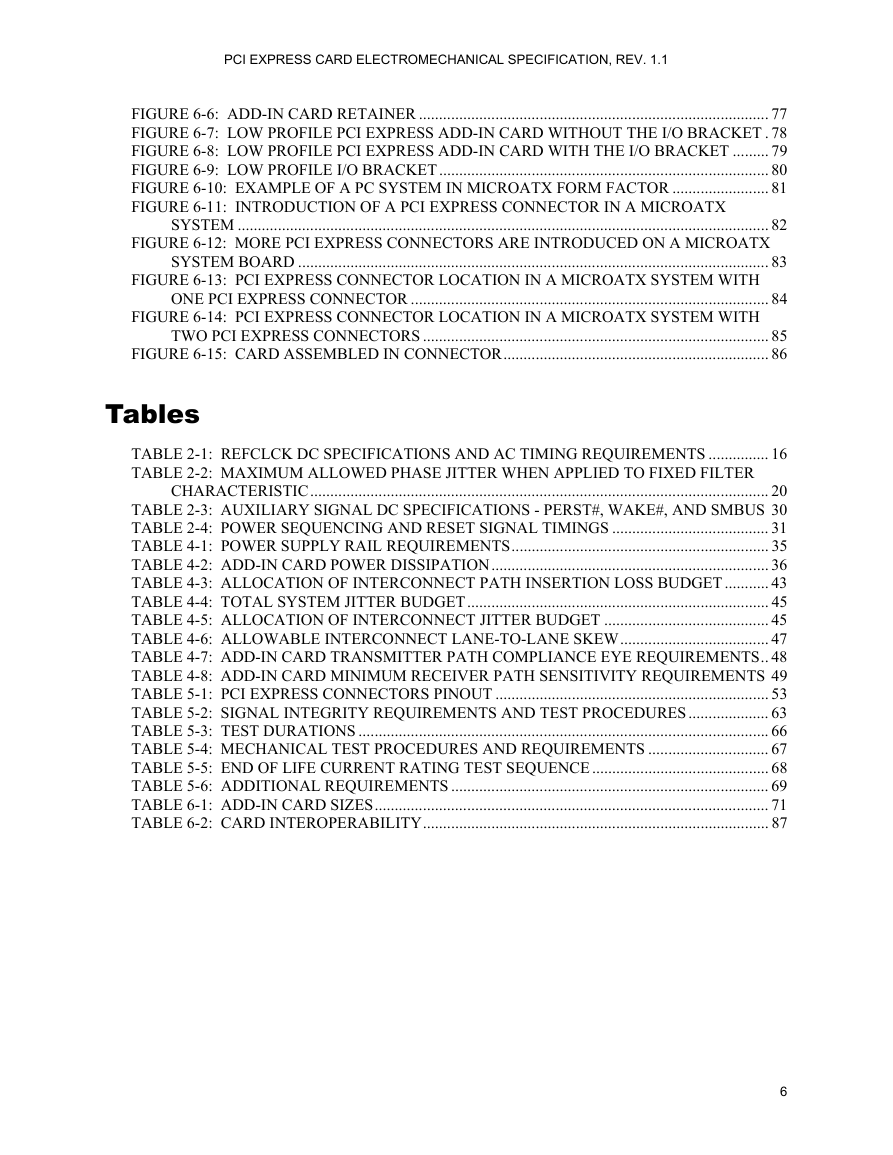
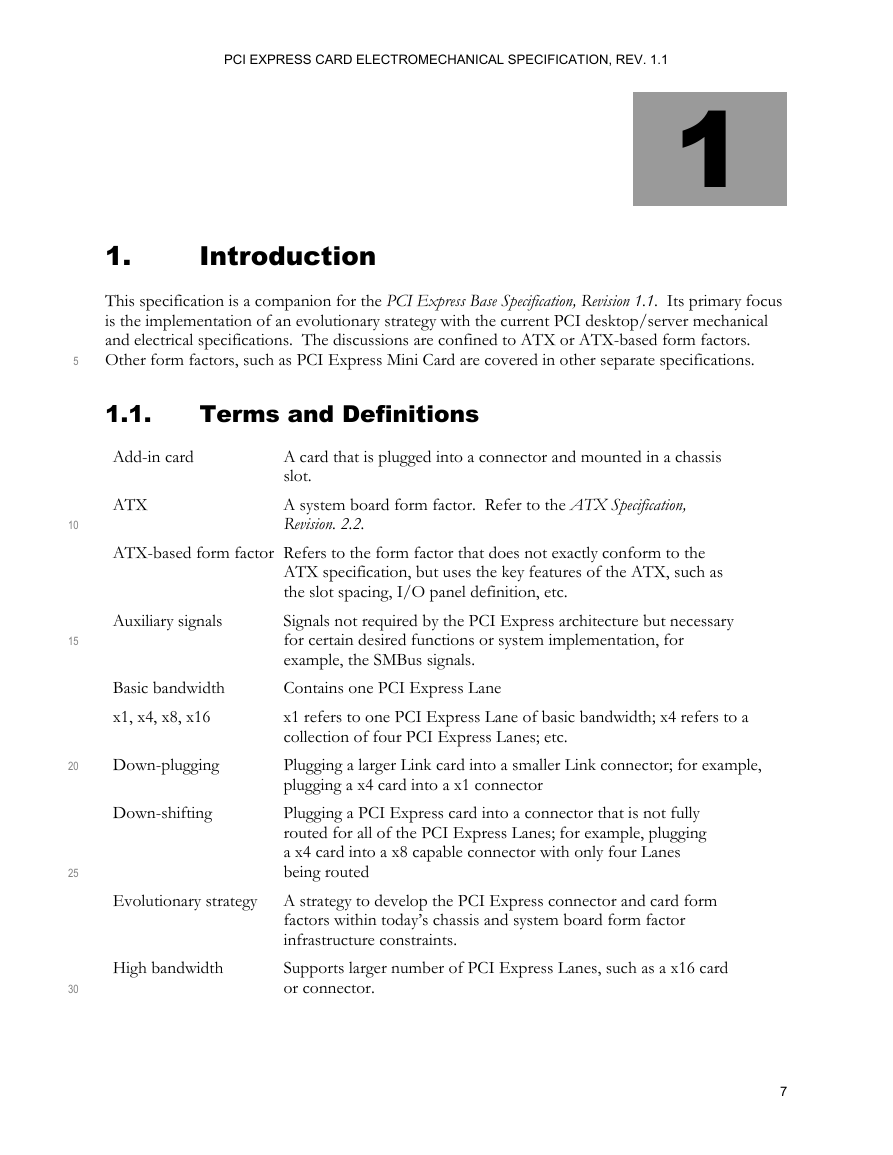
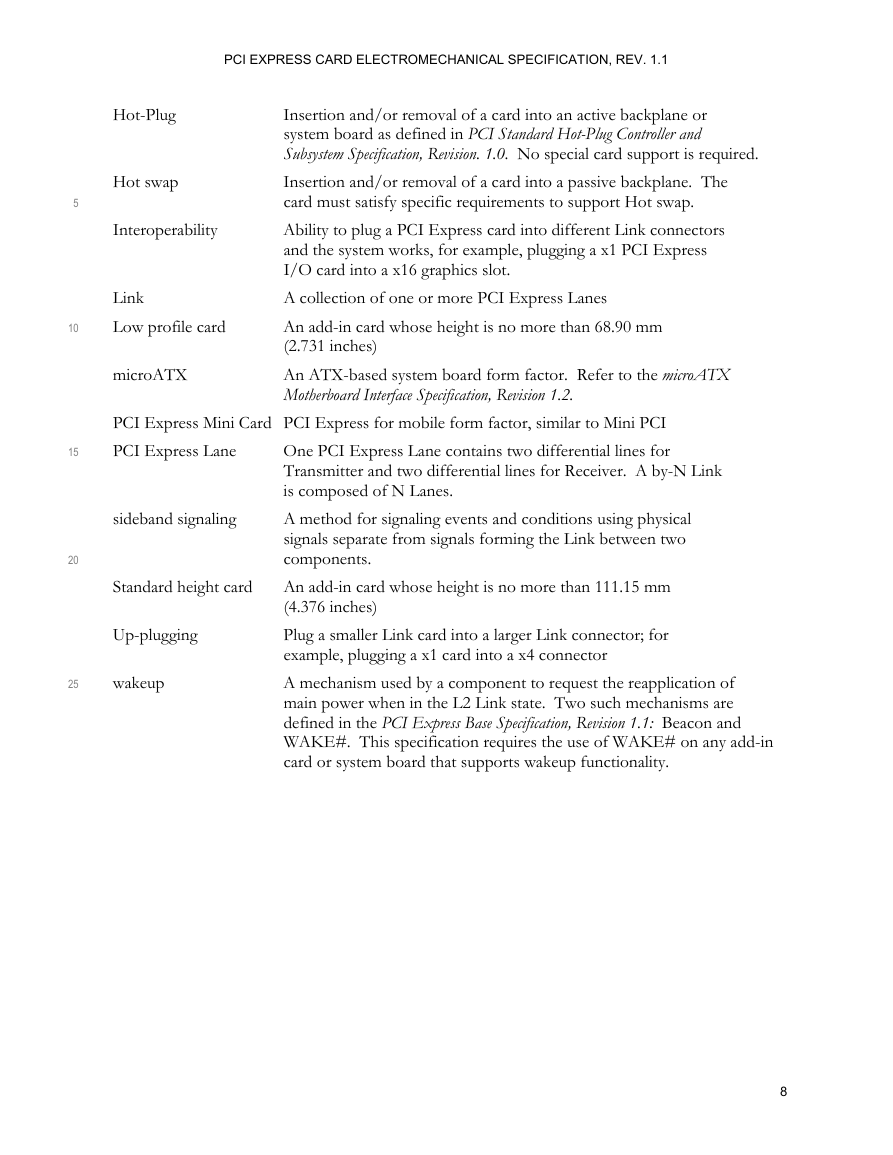








 2023年江西萍乡中考道德与法治真题及答案.doc
2023年江西萍乡中考道德与法治真题及答案.doc 2012年重庆南川中考生物真题及答案.doc
2012年重庆南川中考生物真题及答案.doc 2013年江西师范大学地理学综合及文艺理论基础考研真题.doc
2013年江西师范大学地理学综合及文艺理论基础考研真题.doc 2020年四川甘孜小升初语文真题及答案I卷.doc
2020年四川甘孜小升初语文真题及答案I卷.doc 2020年注册岩土工程师专业基础考试真题及答案.doc
2020年注册岩土工程师专业基础考试真题及答案.doc 2023-2024学年福建省厦门市九年级上学期数学月考试题及答案.doc
2023-2024学年福建省厦门市九年级上学期数学月考试题及答案.doc 2021-2022学年辽宁省沈阳市大东区九年级上学期语文期末试题及答案.doc
2021-2022学年辽宁省沈阳市大东区九年级上学期语文期末试题及答案.doc 2022-2023学年北京东城区初三第一学期物理期末试卷及答案.doc
2022-2023学年北京东城区初三第一学期物理期末试卷及答案.doc 2018上半年江西教师资格初中地理学科知识与教学能力真题及答案.doc
2018上半年江西教师资格初中地理学科知识与教学能力真题及答案.doc 2012年河北国家公务员申论考试真题及答案-省级.doc
2012年河北国家公务员申论考试真题及答案-省级.doc 2020-2021学年江苏省扬州市江都区邵樊片九年级上学期数学第一次质量检测试题及答案.doc
2020-2021学年江苏省扬州市江都区邵樊片九年级上学期数学第一次质量检测试题及答案.doc 2022下半年黑龙江教师资格证中学综合素质真题及答案.doc
2022下半年黑龙江教师资格证中学综合素质真题及答案.doc